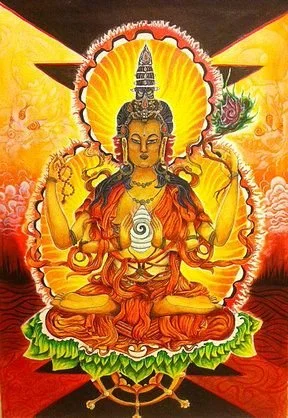Why Distrust Towards Tantra Is as Understandable as It Is Mistaken: How to Make Tantra a Liberating and Life-Changing Experience
Tantra, a complex spiritual and philosophical tradition, has often been misunderstood in both its native South Asian and modern global contexts. While skepticism towards Tantra is understandable due to its esoteric practices and decentralized nature, such distrust overlooks its potential as a transformative practice. When approached with humility, curiosity, and academic rigor, Tantra offers profound opportunities for personal and societal growth.
Understanding Distrust Towards Tantra
Skepticism about Tantra arises from its association with transgressive practices and secrecy. Unlike centralized religious traditions, such as Catholicism with its governing Church or Judaism or Islam with their codified Torah or Qur’an, Hinduism lacks a central authority to regulate interpretations of Tantric or many other teachings. This decentralized nature has led to varied interpretations, some of which deviate from Tantra’s original philosophical aims.
In the West, particularly during the 20th century, Tantra was often reduced to an exotic sexual practice, overshadowing its deeper philosophical dimensions (Urban, 2003). Such portrayals have fueled distrust and misunderstanding. However, as Mircea Eliade (1948) pointed out, Tantra should not be viewed as a separate religion but as an important stage in the evolution of Indian religious thought, becoming a pan-Indian esoteric system after the 5th century CE. Eliade emphasized Tantra’s pervasive influence, highlighting its role in shaping a vision of the cosmos and human existence that integrates rituals, mantras, and meditation as pathways toward liberation (jivanmukti).
Decentralization as an Opportunity for Progress
Despite contributing to misconceptions, decentralization allows Tantra to evolve alongside scientific advancements. Without rigid hierarchies, Tantra’s teachings can be reinterpreted to integrate ancient wisdom with modern knowledge. Scholars note that this flexibility fosters dialogue between spirituality and rationality (Padoux, 2013).
Concepts once dismissed as mystical are now being explored through neuroscience and psychology. Research into meditation and mindfulness supports many core Tantric practices, lending scientific legitimacy to its ancient teachings (Davidson & Goleman, 2017). This scientific backing invites both skeptics and seekers to engage with Tantra meaningfully.
Furthermore, decentralization enables diverse approaches to Tantra—as philosophy, meditation, or embodied spirituality—making it accessible to a broad audience and encouraging a shared pursuit of self-realization. Madeleine Biardeau (1981) noted that Tantra doesn’t introduce entirely new ideas but rather reinterprets well-known values in an esoteric manner. She described it as amplifying traditional Brahmanical concepts, such as the four aims of life (kama, artha, dharma, and moksha), placing particular emphasis on kama (desire) as a means to progress toward liberation. This perspective underscores Tantra’s adaptability and its potential for offering unique approaches to personal and spiritual development.
The Path Forward: Humility, Curiosity, and Rigor
To make Tantra a truly liberating experience, it must be approached with humility, curiosity, and rigor. Humility involves acknowledging the vastness of the tradition and the limits of personal understanding. To get an idea, Tantra interpretations vary from their transgressive forms to their institutionalized Vedic perspectives within Hinduism, and then there is variability in the Buddhist and Jain traditions, each with varying interpretations (Flood, 2006).
The scholarly and scientific approach of the last century has ensured that Tantra can remain grounded in historical evidence and evidence-based practices. Therefore, while embracing the mystical, Tantra also encourages critical thinking. Engaging with scholarly research bridges ancient wisdom with contemporary understanding, enhancing its credibility and relevance.
Rediscovering Human Heritage through Tantra
Tantra’s expansive nature mirrors the universe’s vastness. Whether we focus on the meditative exercises of Kashmir Shaivism or the ritualistic practices of the Kaula tradition, the elaborate amalgam of wisdom offers pathways to rediscover our shared human heritage. This dynamic process fosters meaning and enlightenment. By embracing both scientific inquiry and spiritual exploration, Tantra provides a path toward liberation that transcends cultural and ideological boundaries.
Conclusion
Although distrust towards Tantra is understandable, due to its various interpretations and decentralized nature, such can be refuted through informed engagement. Its decentralized nature offers flexibility for adaptation, allowing Tantra to evolve in ways that are aligned with modern science and that benefit individuals and society. When approached with humility, curiosity, and rigor, Tantra becomes a powerful tool for personal growth and a bridge between ancient traditions and modern understanding, fostering inclusive and profound paths to liberation. This is our purpose and achievement at Bloom, so we cannot wait for you to experience the life-changing transformation that is possible through Tantra. Let us know your doubts or commitment and start your journey.
By Ram, for Bloom Barcelona

